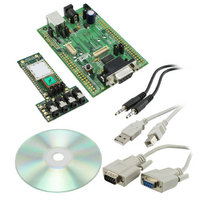DVK-BTM521 Laird Technologies, DVK-BTM521 Datasheet - Page 26

DVK-BTM521
Manufacturer Part Number
DVK-BTM521
Description
BT MM DEV KIT
Manufacturer
Laird Technologies
Type
Transceiver, Bluetoothr
Specifications of DVK-BTM521
Frequency
2.4GHz
Interface Type
RS-232
Processor Series
BTM521
Silicon Manufacturer
Laird Technologies
Kit Application Type
Communication & Networking
Application Sub Type
Bluetooth
Kit Contents
Development Board & Software Tools
Features
Supports CSR
Rohs Compliant
Yes
For Use With/related Products
BTM521
Lead Free Status / RoHS Status
Lead free / RoHS Compliant
Lead Free Status / RoHS Status
Lead free / RoHS Compliant, Lead free / RoHS Compliant
Other names
DVK-BTM521
Available stocks
Company
Part Number
Manufacturer
Quantity
Price
Company:
Part Number:
DVK-BTM521-01
Manufacturer:
LAIRD
Quantity:
7
BTM520/521
Bluetooth
AT COMMAND SET
REFERENCE
26 www.lairdtech.com
®
Multimedia Plus Module
AT Commands Managing Trusted Devices
AT Commands for Serial Stream Oriented Profiles (SSO)
The Serial Port Profile (SSP) and the Dial-up Networking Profile (DUN) belong to the group of Serial Stream
Oriented profiles (SSO).
When activated, an SSO profile claims one UART for its data stream and assumes all data at the UART to
be transmitted over or received from RF 1:1. Hence, as there is only one UART available on a BTM device,
the UART is not available for other profiles, services or module control purposes.
One approach of managing data and control over UART is to configure local command mode with S531=3.
In this mode, incoming RF data is presented by the asynchronous message RX<string>. Outgoing data is sent
by ATX<string> or ATY<string>.
With this approach it is possible to manage several non-SSO connections (e.g., A2DP, AVRCP) and at
maximum one SSO connection (SSP or DUN). An attempt to connect a second SSO profile while already
one SSO connected will result in Error 65.
Any incoming connection request to an SSO profile will be rejected if one SSO is already connected.
The following section describes AT- commands related to SSO-profiles.
1. AT+BTT?
2. AT+BTT
3. AT+BTD<bd_addr> {Remove Trusted Device}
4. AT+BTD* {Remove All Trusted Devices}
5. AT+BTW? {List Cached Trusted Device}
This command is used to list the contents of the trusted device database. The link key is NOT displayed
so the response is as shown below. If the list is empty then just the OK response is sent otherwise an
OK is used to terminate the list. Use the command ATI6 to read the maximum size of the trusted
device database.
Response: <cr,lf>12346789012
<cr,lf>12345678913
<cr,lf>12345678914
<cr,lf>OK<cr,lf>
This command is used to store the cached link key in the non-volatile database. If the database is full,
it will respond with an ERROR. If the device is already in the database, then the key is replaced. If the
link key cache is empty, that is, a pairing has not been performed since the device was powered, then
the response will be an ERROR.
Response: <cr,lf>OK<cr,lf>
Or
Response: <cr,lf>ERROR<cr,lf>
This command is used to remove the specified device from the list of trusted devices in the non-volatile
database. If the device is not in the database, then the response will still be an OK.
Response: <cr,lf>OK<cr,lf>
This command is used to remove all devices from the trusted device list (TDL) in the non-volatile
database. No confirmation will be asked for. So beware!!!
WARNING: If you make a connection, the link key gets cached in the underlying stack. So if you
subsequently delete the key using AT+BTD* and immediately request a connection to the same device,
then the connection will be established. To ensure this does not happen, send ATZ after the AT+BTD*.
Response: <cr,lf>OK<cr,lf>
This command is used to list the cached trusted device.
Response: <cr,lf>12346789012
<cr,lf>OK<cr,lf>
If the cache is empty the response is as follows.
Response: <cr,lf>OK<cr,lf>
{List Trusted Device}
{Add Trusted Device}
Laird Technologies



















